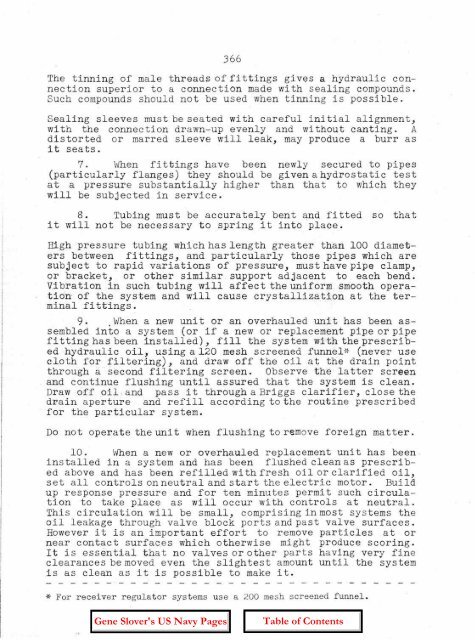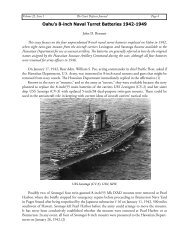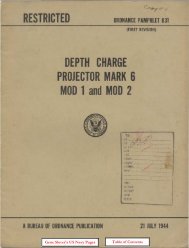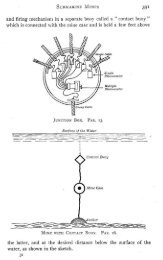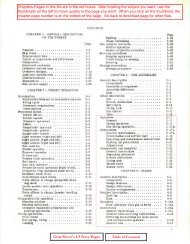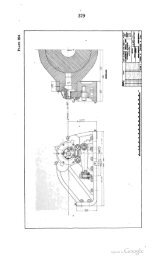OP-755 Part 2 Pages 197-401 - Personal Page of GENE SLOVER
OP-755 Part 2 Pages 197-401 - Personal Page of GENE SLOVER
OP-755 Part 2 Pages 197-401 - Personal Page of GENE SLOVER
You also want an ePaper? Increase the reach of your titles
YUMPU automatically turns print PDFs into web optimized ePapers that Google loves.
366<br />
The tinning <strong>of</strong> male threads <strong>of</strong> fi ttings gives a hydraulic connection<br />
superior to a connection made with sealing compounds.<br />
Such compounds should not be used when tinning is possible.<br />
Sealing sleeve s must be sea ted with careful ini tial alignment,<br />
with the connection drawn-up evenly and without canting. A<br />
distorted or marred sleeve will leak, may produce a burr as<br />
it seats.<br />
7. When fittings have been newly secured to pipes<br />
(particularly flanges) they should be given a hydrostatic test<br />
at a pressure substantially higher than that to which they<br />
will be subjected in service.<br />
8. Tubing must be accurately bent and fitted so that<br />
it will not be necessary to spring it into place.<br />
High pressure tubing which has length greater than 100 diameters<br />
between fittings, and particularly those pipes which are<br />
subject to rapid variations <strong>of</strong> pressure, must have pipe clamp,<br />
or bracket, or other similar. support adjacent to each bend ~<br />
Vibra tion .in such tubing will affec t the uniform smooth operatiOn<br />
<strong>of</strong> the system and will cause crystallization at the terminal<br />
fittings.<br />
9. When a new unit or an overhauled unit has been assembled<br />
into a system (or if a new or replacement pipe or pipe<br />
fi tting has been installed), fill the sys tern wi-th the pr-escr i bed<br />
hydraulic oil, using a 120 mesh screened f'unne L> (never use<br />
cloth for filter~ng), and draw <strong>of</strong>f the oil at the drain point<br />
through ~'second filtering screen. Observe the latter screen<br />
and continue flushing until assured that the system is clean.<br />
Draw <strong>of</strong>f oil and pass it through a Briggs clarifier, close the<br />
drain aperture and refill according to the routine prescribed<br />
for the particular system.<br />
Do not operate the unit when flushing to remove foreign matter.<br />
10. Whena new or overhauled replacement unit has been.<br />
ins taIled in a system and has been flushed clean as prescri bed<br />
above and has been refilled with fresh oil or clarified oil,<br />
set all controls on neutral and start the electric motor. Build<br />
up response pressure and for ten minutes permit such circulation<br />
to take pLace as will occur with controls at neutral.<br />
This circuia tion will be small, comprising in most systems the<br />
oil leakage through valve block ports and past valve surfaces.<br />
However it is an important effort to remove particles at or<br />
near contact surfaces which otherwise might produce scoring.<br />
It is essential that no valves or other parts having very fine<br />
clearances be moved even the slightest amount until the system<br />
is as clean as it is possible to make it.<br />
* For receiver regulator systems use a 200 mesh screened funnel.


